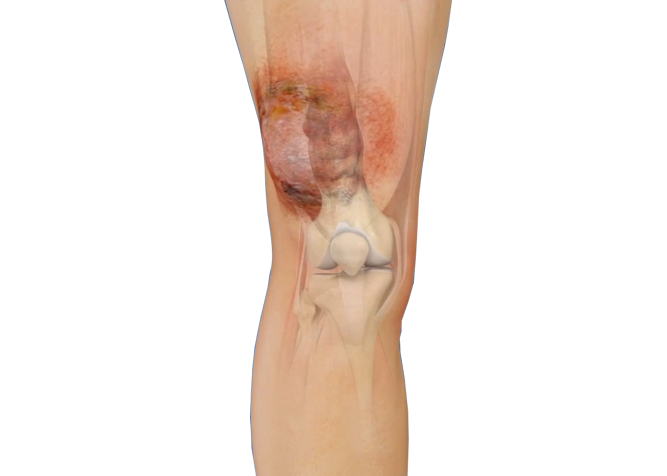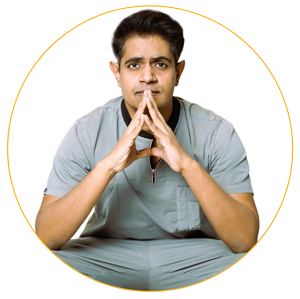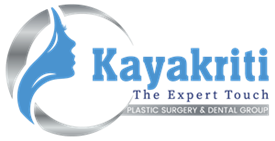Limb Salvage Surgery
Limb salvage, limb trauma,
lower limb reconstruction
Sometimes single staged surgery is enough to salvage the limb.

This includes a wide spectrum of surgeries which are used in different conditions and situations to save the upper limb and lower limbs.
- Conditions like diabetic foot, peripheral vascular diseases, fractures of lower limb with skin loss and tissue loss in which the limbs are shattered and need intensive surgical care. Multiple staged surgical reconstruction surgeries are required to save the structure of the limb and to make it capable of bearing body weight and perform its functions.
- Conditions like accidental fractures of hand and forearm region with soft tissue.
- Conditions with large tumours of the soft tissues or cancers of the skin usually required amputation in the past but with the advent of microsurgery, limbs can be saved now
- Large extensive vascular malformation of the limbs also requires limb salvage surgery after debulking surgery.
Sometimes single staged surgery is enough to salvage the limb. But in few cases where the condition of the patient is not satisfactory and good enough to withstand major reconstructions, salvage may take two to three stages of surgery.
In few other cases, multiple staged reconstructions are required to preserve the function and structure of the limb.
Small defects can be managed by local flaps (local tissue adjustment) but the larger defects need distant flaps (skin and soft tissue from some other part of body is placed over the defect region) or free flaps (skin and soft tissue from distant part of the body is taken out along with the vessels which supply blood to it and then they are transferred over the defect and the vessels are joined with vessels of defect region with the help of microscopic stitches under high magnification)
Conditions in which limb salvage surgery is done are
Diabetic foot
This is the most common condition in which patient comes with a foot and leg infection which is so deep upto the bone that it makes the leg and foot incapable of daily routine activities. The infection if spreads to other body parts through blood stream may lead to serious consequences and even death.
Therefore, it becomes necessary to operate on these patients and remove all the infected tissue from the limb which is called debridement surgery. After debridement, the extent of alive tissue is looked upon for further procedures to be done.
- Small loss of tissue can be dealt with skin grafting or local tissue adjustment (local flaps).
- Large tissue losses are a challenge especially in diabetic patients where blood supply of limbs is already poor due to disease. These cases require distant flaps or free flaps.
Peripheral Vascular Diseases
These patients have absent blood flow in the limb which causes multiple ulcers and finally gangreneor blackening of the limb.
These can be saved by re-establishing the blood flow in the limb using bypass vein or synthetic graft. This graft is placed in the ischemic limb by joining it to the vessels of the limb using microscopic stitches and high magnification microsurgery or supermicrosurgery. This allows blood to bypass the blocked blood vessels and reach the terminal end of the limb to provide nutrition to the tissues.
Open Fractures
In cases of road accidents or violence, patient suffers multiple fractures and loss of skin and muscles of both upper limb and lower limbs. This makes limb flail. Orthopaedic treatment is required first to fix the bony injury by external fixator or internal plating or nailing. After this comes the role of plastic surgeon who is supposed to restore the skin and muscular structures. This is done by either local flaps or free flaps.
Role of a plastic surgeon is immensein management of such injuries.Without an intact skin and soft tissues, the underlying fractures never unite. Plastic surgeons also repair the damaged muscles, tendons, nerves and vessels so that the limb may function well. Reimplantation of cut hands and fingersis the main forte of plastic surgeons.
Tumors and Cancers of skin of lower limb
Various soft tissue tumours and cancers of skin of the lower limb require a proper planning for reconstruction after their appropriate excision. A lot of these cases underwent amputations to save the life of the patient as proper reconstructive techniques were not available. Today with the advent of microsurgical techniques, the limbs can be saved and reconstructed also.
Extensive Vascular malformation
Extensive large slow flow and high flow vascular malformation are very difficult to manage. They need a proper dedicated team approach. Most of them undergo debulking surgeryto reduce the effects of the malformation on the body and on the limb but would require extensive reconstructions also for its proper function after the surgery.
Stages of Surgical procedures of Limb Salvage surgery
Limb salvage surgery is not a single surgical procedure but it may take multiple surgeries to cure the condition to an extent and save the limb. Here, we try to save the limb from amputation using procedures and surgeries to reconstruct and to rehabilitate the patients back to the society.
Stage 1 - Debridement/ Excision/ Removal of growth or tumor
Debridement is the thorough cleaning of the wound and removing unhealthy infected and dead tissues from the wound. After debridement, Negative Pressure Wound Therapy (VAC) before definite procedure is done to reduce the toxins and infection in the body.
After the wound area has settled, there may be a raw area, or defect, which needs to be covered either by skin grafting, local flaps or free flaps (microsurgical reconstruction).
Stage 2 - Skin grafting
Skin grafting may be done if defect is not much deep and vitals structures are embedded in granulation tissue. It can be done in the same setting or at a later stage once the wound is healthy.
Skin grafting is the transfer of thin skin sheet, usually taken from thigh, to cover the raw areas. Once the wound is healthy, skin grafting may be done if defect is not much deep and vitals structures are embedded in granulation tissue. In such cases, dressing is done every alternate day after surgery. Patient may be discharged after 5-6 days, and regular follow-up is required. The area gradually heals and need compression garment later to avoid hypertrophy of scars and to reduce the swelling.
Stage 3 - Microvascular Free Flaps
Reconstruction with flaps is usually done when any critical part of the limb is exposed like bones, tendons, joints and it becomes really important to preserve them for the normal functioning of the limb. A well blood supplied tissue is taken from the adjacent area or from other areas of the body to cover the part of the limb with it. Local flap is the transfer of flap of skin from the surrounding areas to the defect site. It is done when defect is deep and surrounding area is normal and sufficient enough to cover the defect. If not, or local flap fails, then a distant free flap is used to cover the defect through microvascular reconstruction.
Transfer of skin flap, muscle flap from a distant area as a free flap is done to cover the defect using microsurgical techniques. It needs surgical expertise and a good working team.
Dr Amit Agarwal specializes in microvascular reconstructions and has saved innumerable foots, legs and upper limb from amputation.
The flap should be monitored frequently post-surgery. Hospital stay is increased, with respect to skin grafting or local flap procedures, but it is the best modality to cover the defects. Dressing is done every alternate day and patient is admitted for at least 7-8 days and discharged once the flap is settled.
The success rate of limb salvage surgical reconstruction is quite good around 80%- 90% in hands of Dr Amit Agarwal. It means 80-90 out of 100 limbs are saved from amputation.
The results of microsurgical can be quite unpredictable as it is dependent on multiple factors like status of blood vessels, level of immunity of the patient and his/ her health status and protein level to with stand the procedure.
All these surgical techniques are helpful at appropriate time, depending on the type of infectionand excision. Post-surgical management is equally important for overall outcome of the treatment.
After the surgery, patient is bedridden for 2-3 weeks. No ambulation is advised and limb has to be elevated by using pillows underneath. After several dressings, when the operated site is completely stable, patient is given pressure garments and ambulation is started.
Risks related to Microsurgical reconstruction of flap technique like thrombosis or blood clot in the vessels of the flap, re-exploration / re-surgery to remove these clots, and flap failure is seen in less than 5 percent of cases.
Few patients develop some degree of skin slough or partial flap necrosis. This was more often the case in smokers, in those who require a larger flap, and also in patients having undergone anastomotic revision.
Stage 4 – Amputation
usually this condition occurs when the severity is to the fullest and the main motive becomes to save the life of the patient.
Know your surgeon better

Best plastic surgeon, Dr. Amit Agarwal is an American Board Certified, extensively trained, and best Plastic & Aesthetic surgeon in Lucknow. He is the Chief Plastic Surgeon heading the Department of Plastic, Microvascular, and Craniofacial surgery at Vivekananda Polyclinic and Institute of Medical Sciences, Lucknow, U.P, India. He maintains a busy practice at Avadh and Nishat Hospital and his own center - Kayakriti Plastic Surgery & Dental Center. He was formerly a Consultant in the Department of Plastic Surgery and Burns at the prestigious SGPGI, Lucknow.
MS, DNB (General Surgery) MCh, DNB (Plastic Surgery),
MNAMS, FACS, FICS, FRCS (Edinburgh, UK)
His Credentials
Three pillars of kayakriti
Privacy
We believe your experience with us should be comfortable and hassle-free to make it one of your best lifetime experiences for yours. We, here at the clinic, take full precautions to maintain your privacy in any manner. We also provide a staff who will receive you from the gate and take you to the chamber directly if you demand.
Trust
Our Surgeon is highly qualified and internationally certified with a team of skilled staff to perform any surgical or non-surgical treatment on your body.
Safety
When you plan to undergo any surgery you should always keep in mind that it's your body and it's a surgery. We, here always keep your safety a priority and will never recommend you to undergo any such procedure which is not safe for you. We also provide you with a detailed description of the complications which may occur after the surgery during the consultation as it's a surgical procedure so there may be some complications depending on the way your body reacts.
Kayakriti in news



Frequently Asked Questions
If you have flat or small breast and you want to improve your breast and hip contour ratio then you are a good candidate for it. The answer will be best provided after the first consultation with Dr Amit Agarwal.
Acute pain will be there for almost a week which gradually reduces and there will be soreness and swelling which may take up to 3 weeks to subside.
You can join your work and daily routines after a week of the procedure and can start exercising after 3 weeks of it.
Yes, you have to wear it round the clock unless we suggest you to remove it.
This surgery does not affect the ducts or the areas of the breast involved in milk production. Thus, it does not affect the breast feeding.
This surgery does not affect the ducts or the areas of the breast involved in milk production. Thus, it does not affect the breast feeding.












Kayakriti Plastic Surgery & Dental Center
D-43, Near Punjab National Bank, Rajajipuram, Lucknow, Uttar Pradesh - 226017, India
Phone No. +919695940009, +919695940006
Map Location





























Social Media Presence